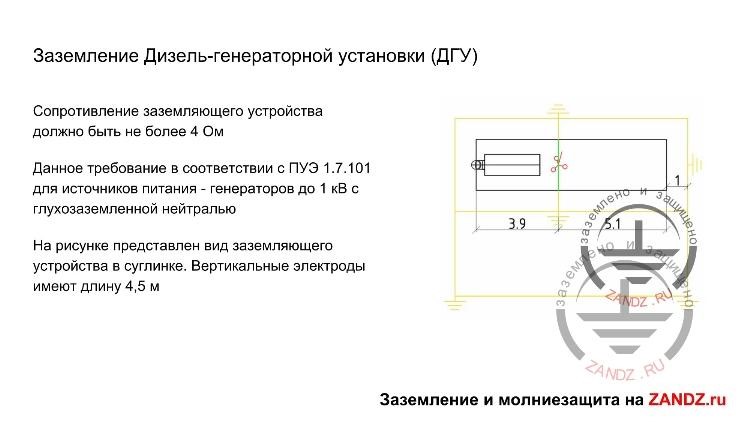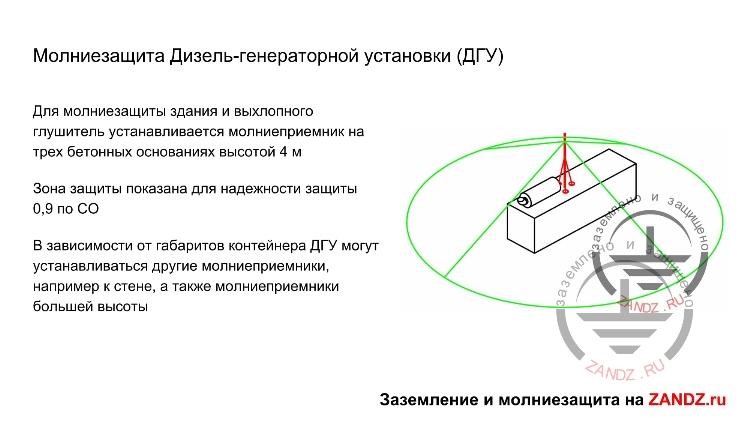The fourth webinar of the "Simply about installing grounding and lightning protection" series
Webinar text. Page 3
Fast navigation by slides:
<< Page 2:
10. Grounding device outside the substation
11. Connecting the lightning rod with the grounding device
12. Internal grounding circuit
13. Internal grounding circuit (continued)
14. Lightning protection of the substation
15. Lightning rods as the protection against lightnings
16. Horizontal grounding devices arrangement
17. Connecting the lightning rod with the grounding device
18. Calculation of the substation lightning protection
Page 3:
19. Lightning protection of shared utility meters and protective distribution devices
20. Electromagnetic compatibility
21. Cable protection
22. Cable in the reinforced concrete tray
23. Grounding and lightning protection for protective distribution devices 10 kV
24. Grounding of packaged transformer substations 10(6)/0.4 kV
25. Grounding of diesel generator set
26. Lightning protection of diesel generator set
27. Questions and answers
| Молниезащиата ОПУ и ЗРУ | Lightning protection of common substation control room and closed switchgear |
| На зданиях ОПУ, ЗРУ в качестве молниеприемника используется металл крыши | Roof metal is used as a lightning arrester on the common substation control room and closed switchgear buildings |
| БМЗ, как правило, электрически непрерывно и может использоваться в качестве молниеприемника и токоотвода | Packaged modular building, as a rule, is electrically continuous and can be used as the lightning arrester and current discharger. |
| В качестве заземления используется контурный заземлитель либо естественный заземлитель -ж/б фундамент | Circuit ground terminal or natural ground terminal, represented by the reinforced concrete foundation can be used as the grounding |
| Если требуется - устанавливаются стержневые молниеприемники | Lightning rods are installed, if required |
| Заземление и молниезащита на ZANDZ.com | Grounding and lightning protection on ZANDZ.com |
Lightning protection of shared utility meters and protective distribution devices
– The shared utility meters are usually placed in the modular metal buildings. It is sufficient to connect the metal building structure to the grounding circuit at four points. Keep in mind that the circuit grounding device or a natural grounding device (reinforced concrete foundation) can also be used as the grounding system.
| Электромагнитная совместимость | Electromagnetic compatibility |
| На входе контрольных кабелей в здание ОПУ устанавливается 3 вертикальных электрода длиной 5 м на расстоянии 5 м друг от друга | 3 vertical electrodes with the length of 5 m are to be installed with the spacing of 5 m at the control cables inlet into the common substation control room building |
| Само металлическое блочно-модульное здание экранирует наведенный потенциал от электромагнитного поля тока молнии | The modular metal building itself shields the induced potential of the lightning current electromagnetic field. |
| Таким образом защищается вторичное оборудование и системы связи | Thus the secondary equipment and communication systems are protected. |
| Заземление и молниезащита на ZANDZ.com | Grounding and lightning protection on ZANDZ.com |
Electromagnetic compatibility
– To provide the electromagnetic compatibility at the inputs of control cables into the building, three vertical electrodes of 5 meters long are installed at the distance of 5 meters from each other. The depth is equal to the distance between the adjacent electrodes. The modular metal building itself shields the induced potential of the lightning current electromagnetic field. Thus the secondary equipment and communication systems are protected.
| Электромагнитная совместимость | Electromagnetic compatibility |
| Для защиты кабелей от наведенного потенциала, они помещаются в: | In order to protect the cables against the induced potential these shall be put into: |
| металлические короба и | metallic boxes and |
| железобетонные лотки | reinforced concrete trays |
| располагаются на расстоянии не менее 10 м от молниеприемников | located at the distance of at least 10 meters from the lightning arresters |
| Также заземляются экраны кабелей с 2-х концов | Cable shields are also shall be grounded on both ends |
| Расчет наведенного потенциала выполняется в специальной программе, позволяющей рассчитать наводки на кабели | The calculation of the induced potential is performed in special software that allows calculating the cable interference. |
| Заземление и молниезащита на ZANDZ.com | Grounding and lightning protection on ZANDZ.com |
Cable protection
– To protect the cables against the induced potential, the are placed into the metal boxes or reinforced concrete trays and are located at the distance of not less than 10 meters from the lightning rods.
| Кабель в железобетонном лотке | Cable in the reinforced concrete tray |
| Заземление и молниезащита на ZANDZ.com | Grounding and lightning protection on ZANDZ.com |
Cable in the reinforced concrete tray
– Grounding of the building intended for the protective distribution devices 10 kV located in accordance with the electrical installations operating code, item 1.7.96, for the electrical units over 1 kV in the grids with the isolated neutral wire 35–10 kV, the protective distribution device resistance should not exceed 10 Ohm. If the protective device is used for the voltage of up to 1 kV, its resistance must not exceed 4 Ohm. The clay loam requires a 10 x 8 circuit and the vertical electrodes with the depth of 6 meters located in the corners as shown in the picture.
| Заземление и молниезащита ЗРУ 10 кВ | Grounding and lightning protection for protective distribution devices 10 kV |
| В соответствии с ПУЭ п.1.7.96 для электроустановок напряжением выше 1 кВ в сетях с изолированной нейтралью (35-10 кВ) сопротивление ЗУ не должно превышать 10 Ом | In accordance with item 1.7.96 of EIC, for the electrical installations with the voltage over 1 kV in the networks with insulated neutral line (35-10 kV) the ground terminal resistance shall not exceed 10 Ohm |
| Если ЗУ используется и для напряжения до 1 кВ, то его сопротивление по ПУЭ 1.7.97 и 1.7.104 не должно превышать 4 Ом | If a ground terminal is also used for the voltage of up to 1 kV, then its resistance as per EIC 1.7.97 and 1.7.104 shall not exceed 4 Ohm |
| В суглинке необходим контур 10x8 и вертикальными электродами длиной 6 м по углам | 10x8 circuit and vertical electrodes with the length of 6 m at the corners is required in clay loam |
| Если здание не блочно-модульное, то необходима защита стержневыми молниеприемниками | If the building is not modular, the lightning rods are required for protection |
| Заземление и молниезащита на ZANDZ.com | Grounding and lightning protection on ZANDZ.com |
Grounding and lightning protection for protective distribution devices 10 kV
– Each electrode must have the depth of not less than 6 meters.
| Заземление КТП 10(6)/0,4 кВ | Grounding of packaged transformer substations 10(6)/0.4 kV |
| Сопротивление заземляющего устройства должно быть не более 4 Ом (ПУЭ 1.7.101 для электроустановок до 1 кВ с глухозаземленной нейтралью) | The resistance of the grounding devices shall not exceed 4 Ohm (EIC 1.7.101 for 1 kV electrical units with the solidly grounding neutral wire). |
| Также требуется прокладка горизонтального контура вокруг здания на расстоянии не более 1 м от края фундамента. ПУЭ 1.7.98 для электроустановок до 1 кВ с изолированной нейтралью. Контур расширяется, если это нужно из-за высокого удельного сопротивления грунта | Moreover, layout of the horizontal circuit around the building at the distance of not more than 1 meter from the foundation edge is required. EIC 1.7.98 for the electrical installations of up to 1 kV with the insulated neutral wire. The circuit is extended when this is required due to high soil resistivity |
| Для снижения сопротивления ЗУ устанавливаются вертикальные электроды | To reduce the ground terminal resistance, vertical electrodes are installed |
| Заземление и молниезащита на ZANDZ.com | Grounding and lightning protection on ZANDZ.com |
Grounding of packaged transformer substations 10(6)/0.4 kV
– The resistance of the grounding devices should not exceed 4 Ohm for the electrical units with the solidly grounding neutral wire. Moreover, layout of the horizontal circuit around the building at the distance of not more than 1 meter from the foundation edge is required. To reduce the resistance, vertical electrodes are installed.
| Заземление Дизель-генераторной установки (ДГУ) | Diesel generator plant (DGP) grounding |
| Сопротивление заземляющего устройства должно быть не более 4 Ом | The resistance of the grounding device should not exceed 4 Ohm. |
| Данное требование в соответствии с ПУЭ 1.7.101 для источников питания - генераторов до 1 кВ с глухозаземленной нейтралью | This requirement is in line with EIC 1.7.101 for the power sources, generators with the solidly grounded neutral wires of up to 1 kV. |
| На рисунке представлен вид заземляющего устройства в суглинке. Вертикальные электроды имеют длину 4,5 м | The picture shows the view of the grounding device in the clay loam. The vertical electrodes have the length of 4.5 meters. |
| Заземление и молниезащита на ZANDZ.com | Grounding and lightning protection on ZANDZ.com |
Grounding of diesel generator sets
– A similar solution of the lightning protection grounding is used for the diesel generator sets.
| Молниезащита Дизель-генераторной установки (ДГУ) | Diesel generator plant (DGP) lightning protection |
| Для молниезащиты здания и выхлопного глушитель устанавливается молниеприемник на трех бетонных основаниях высотой 4 м | The lightning arrester on three concrete bases with the height of 4 meters is installed for the building and exhaustion silencer lightning protection. |
| Зона защиты показана для надежности защиты 0,9 по СО | The protection area is shown for the protection reliability of 0.9 as per SO |
| В зависимости от габаритов контейнера ДГУ могут устанавливаться другие молниеприемики, например к стене, а также молниеприемники большей высоты | Other lightning arresters can be installed depending on the DGP container size, for example, onto the wall, as well as higher lightning arresters |
| Заземление и молниезащита на ZANDZ.com | Grounding and lightning protection on ZANDZ.com |
Lightning protection of diesel generator sets
– Now, let us try to study the example of lightning protection of a building and an exhaust silencer. The lightning rod is installed on three concrete foundations that are 4 meters high, since the building roof is flat and it is hard to secure anything to it. So we choose a set containing the reinforced concrete weights. We need to calculate the height that covers not only the building roof edges but also the exhaust pipe to protect against the lightning strike. Depending on the diesel generator set container size, they can be installed on another lightning rods and secured to the wall. And higher lightning rods can be installed directly in the soil.
– During the webinar, we tried to study the extensive area of grounding the lightning protection for substations and considered major issues. Of course, there are many aspects left that have to be considered in the course of design and installation. So, contact the ZANDZ Technical Center and ask your questions regarding the substation grounding. We will answer your questions and help. Moreover, it would be interesting for us to know if you have ever installed grounding at substations. I hope that you have actively took our questionnaires. Thank you for attention! I am waiting for your answers.
Questions and answers
– Svetlana has written that the customers do not want to install limiters because they explode. Honestly, I have heard this for the first time. It would be interesting to know about it in details.
– If they want to show the facts of these limiters explosion (photo or video), let us consider it more thoroughly. But until them, these are only words.
– Yes, I would like to get some information about this case. Svetlana, was it a single case?
– Yes. Send me the energy specialists' phone to the e-mail. We will contact them and discuss. I have never encountered such situation. I am interested in it. When we assess the situation, we will surely find a solution.
– Valeria asks: "Are active lightning rods used?" Dmitry, answer this question, please. As far as I know, they are not permitted now in the standards.
– Actually, the information about the active lightning rods is ambiguous. There are many pros and cons, but the actual statistics telling that in some cases, passive lightning rods work better, and in other cases, active lightning rods work better, does not exist. Here, it depends on your thinking. If you believe that the active lightning rods actually work... There is much logic in their description, but we couldn't yet compare them in two proximate points using active or passive lightning rods after the storm.
– Vasily asks about the height of the internal grounding circuit layout.
– Up to 60 cm for the internal circuit.
– Vasily asks again: "Can metal door and gate frames be a part of the internal grounding circuit, or should we install a separate circuit?"
– In theory, yes.
— Irina asks about using the lightning protection grid: "How can we use it?"
— The lightning protection grid; I have also studied this subject; as for me personally, I do not like using it.
— Question from Anatoly: "I want to clarify the internal circuit height. What justifies the height of 60 cm?"
— There is a special formula. We can help you in calculations. It is calculated using the special factors depending on the protection degree.
— I ask technical specialists to join the discussion. There are many questions in the chat.
— The question was about the circuit height but not the lightning rod. I answered with regards to the circuit height. We have already said that the internal circuit must be at the distance of 60 cm from the floor.
— Yes, but what justifies this requirement?
— Practice.
— Thank you. Other questions have been highlighted in the chat. If you have any questions after the webinar, please send them to our e-mail. These questions will be answered by the technical specialists.
— Indeed, it depends on the equipment, on whether it can be moved to the wall. If we talk about home equipment, about PCs and so on, there are other protection requirements, they are much simpler. You ground this equipment through the 220 V socket, etc. If we talk about the high-voltage equipment, then, as far as I know, according to the regulatory documents, it cannot be moved closer than 1 meter to the wall. This is the first point. Second, if you attach this equipment to the circuit, then you do this only once. In our case, if you need to move it to the wall urgently, then you first weld it or you can do that using the wire having the respective cross-section. If I am not mistaken, Dmitry or Denis will correct me, as far as I know, the conductor area must be at least 25 mm2. Again, it depends on the equipment power. The sandwich panel structure is either welded or secured with bolts and is usually integral. Again, I would like to remind you that you should be careful with regards to the sandwich panels. There are two points: the first one is the sheet thickness, and the second one is the thermal insulation flammability. If you are sure that it is non-flammable, and the sheet thickness is over 0.5 mm, you can use it.
— Svetlana asks a question about the grounding device perimeter: "Can we get outside?"
— I would try to solve this issue, because the band has the thickness of 4 mm, and I cannot imagine the case, when it would be impossible to install it along the wall. Let engineers correct me.
— "Are self-tapping screws attached to the metal structure considered a reliable grounding?"
— The self-tapping screws themselves are not a grounding.
– Thank you, Sergei Alekseevich. All the questions are answered. Dmitry has also supplemented the answer of Sergei Alekseevich for Vasily's question.
— I want to add a little information to the Dmitry's answer. I mean that 0.5 Ohm per one connection. If we, e.g., take the lightning rod as a base, and lead the current collectors from it, which are interconnected by the bolted-type connections, then it should not be more than 0.5 Ohm at irregularities. So, if we have two or three such connections, then, from the lightning rod to the grounding system, we multiply by such number of connections, and the total resistance from the lightning rod to the grounding should not exceed the specified total value.
— "Can we take the grounding standards according to EIC for the moderate climate in calculations in the permafrost soils, if the soil is filled-up?"
— Yes, Lyudmila, we can. But in these cases, I paid attention not to the climate but directly to the soil.
— Thank you, Sergei Alekseevich. Dmitry writes that some questions require rather extensive answers, so, please, do not hesitate to write us to e-mail. We will answer them. Moreover, dear colleagues, I would like to say that we have different communities and groups in social media, where we also answer the questions.
— I want to tell you one thing. To what extent do you need the customer? You understand that in the cases when you install the grounding or some kind of protection, it is pretty dangerous to follow the customer's wishes, because usually customers want to have it as cheap as possible. I mean if you have installed the angles, and each grounding according to the electrical installations code should be at least 2 meters, then the angles are 2 to 3 meters. If you have not met the required parameters, then you will be in charge of it. In these cases, I refuse to do it because of reputation and safety issues. They are more important than the money that your customer wants to save. Our final goal is not the money but the customer's satisfaction. If the customer is fully aware of safety, then you, being a professional, must decide and, in the worst case, refuse to take this order.
— Question from Tatyana: "In the fill-up soil, we use 12 pieces of 7-meter long vertical grounding devices made of a tube with a diameter of 90 mm. Do you need to fill it up with the soil but not the graphite mix?"
— Tatyana, I usually use ZANDZ rods, which are interconnected using the couplings, and go deep. In my practice, I had 12 rods, 1.5 m each. Bury with one rod. I managed to pass the fill-up soils, reached the good soil; in some cases, reached water, and I happened to obtain the desired resistance. The last facility of this kind was the MRI Center that required 4 Ohm. 12 pieces for two rods, it is about 13 meters. I mean, two rods, 13 meters each, yielded 3.2 Ohm in total. So, the customer was satisfied.
— Yes, I agree with Sergei Alekseevich and Denis. Tatyana, send us a request to the e-mail, we will respond to it. There is a question in the chat from Irina. I think it is interesting, it is regarding the calculation of the grounding circuit with graphite. Dmitry has already answered it. However, we used graphite not the way we use the electrolytic grounding, but the question is certainly interesting.
— The question is not quite clear. Irina, do you need the circuit of the electrolytic grounding with graphite? Or, you mean the rod grounding, which is supplemented by graphite? I will answer the latter question: I have not had such practice yet. I thought about it, but could not check and test. Usually, I obtained the desired resistance when I used the combination with the rod grounding; all the remaining issues were solved using the tubes with graphite, like Tatyana said.
– Thank you, Sergei Alekseevich. We have run out of questions. Dear colleagues! Please send your questions to the e-mail. We will look through them thoroughly in order to provide specific answers to the specific tasks. We thank participants for visiting our today webinar. We can finish now. Thank you and see you soon!
<< Previous page
slides from 10 to 18
Useful materials for designers:
- Webinars with participation of lead experts of the industry
- All for calculation of the earthing and lightning protection
- Useful materials: articles, recommendations, examples
Related Articles:


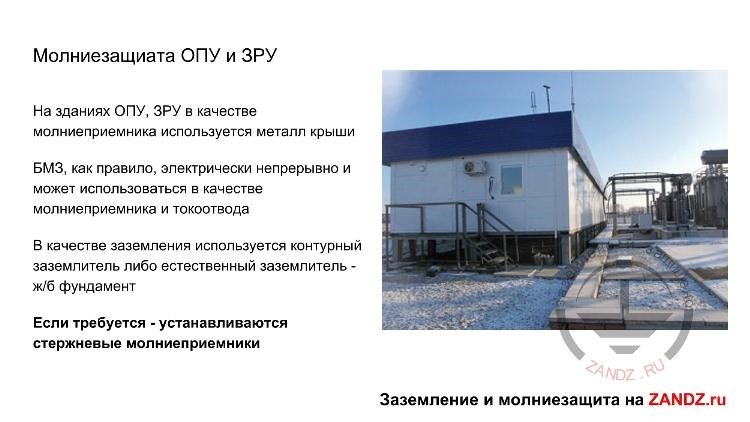
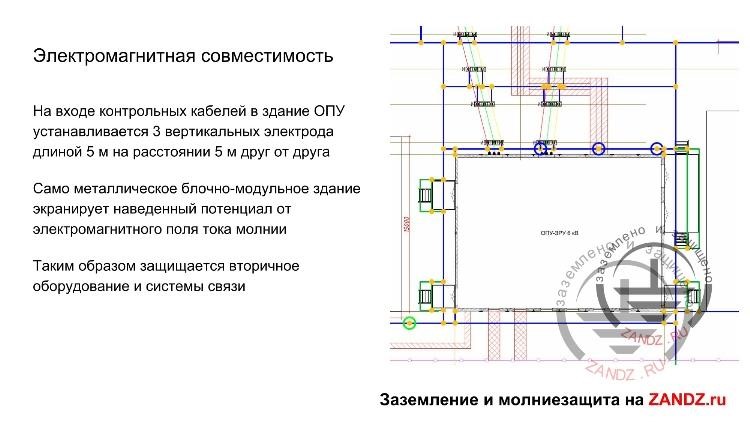
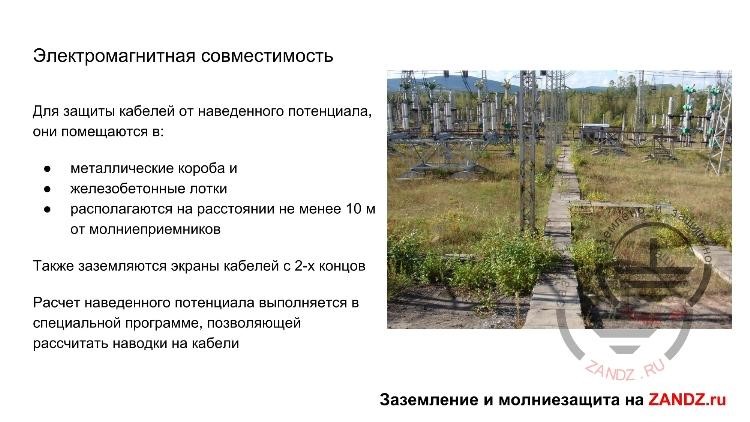
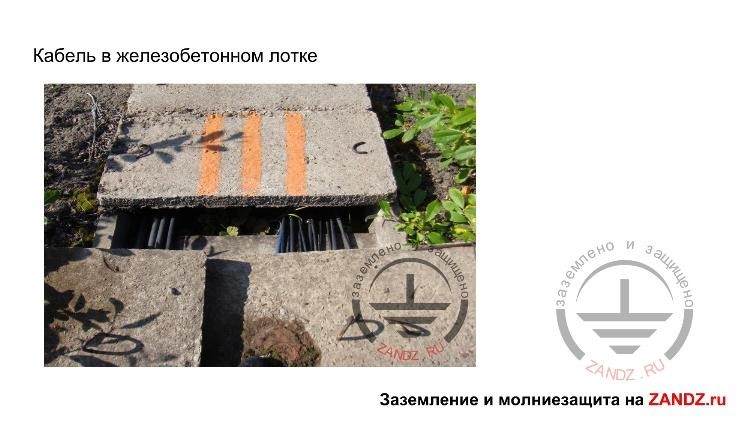
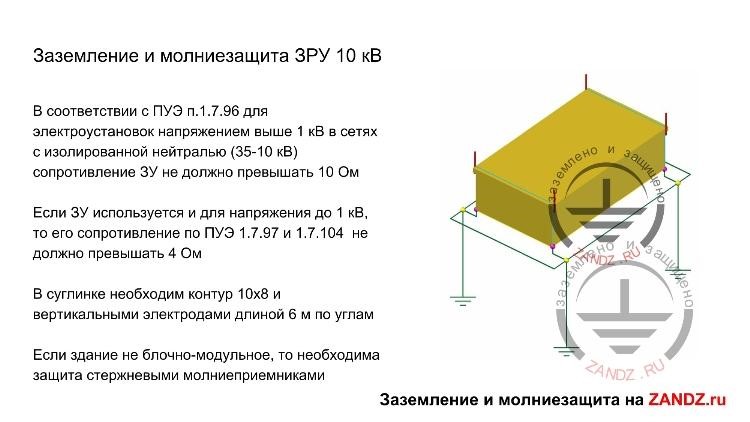
 0.4 kV.jpg)
